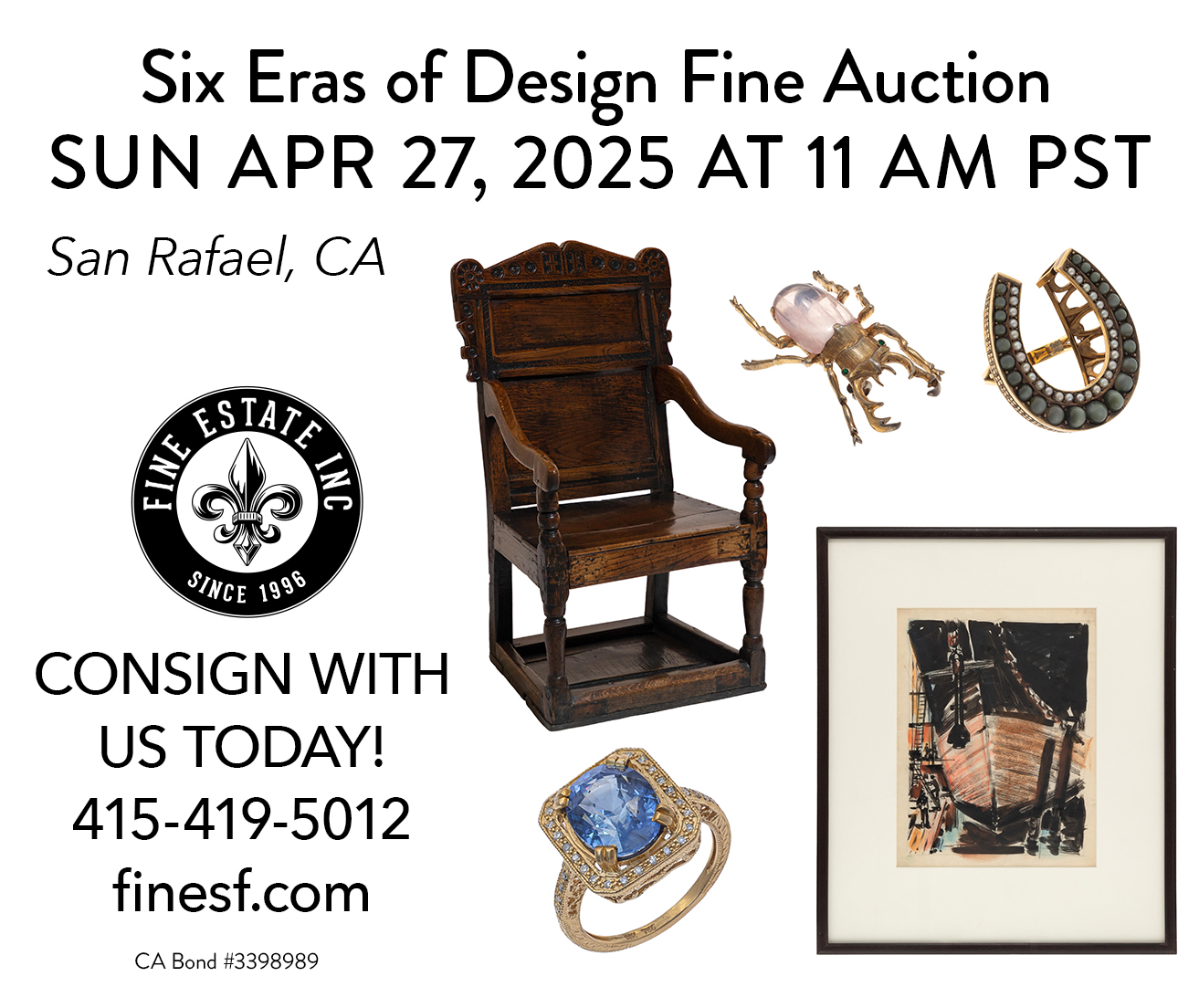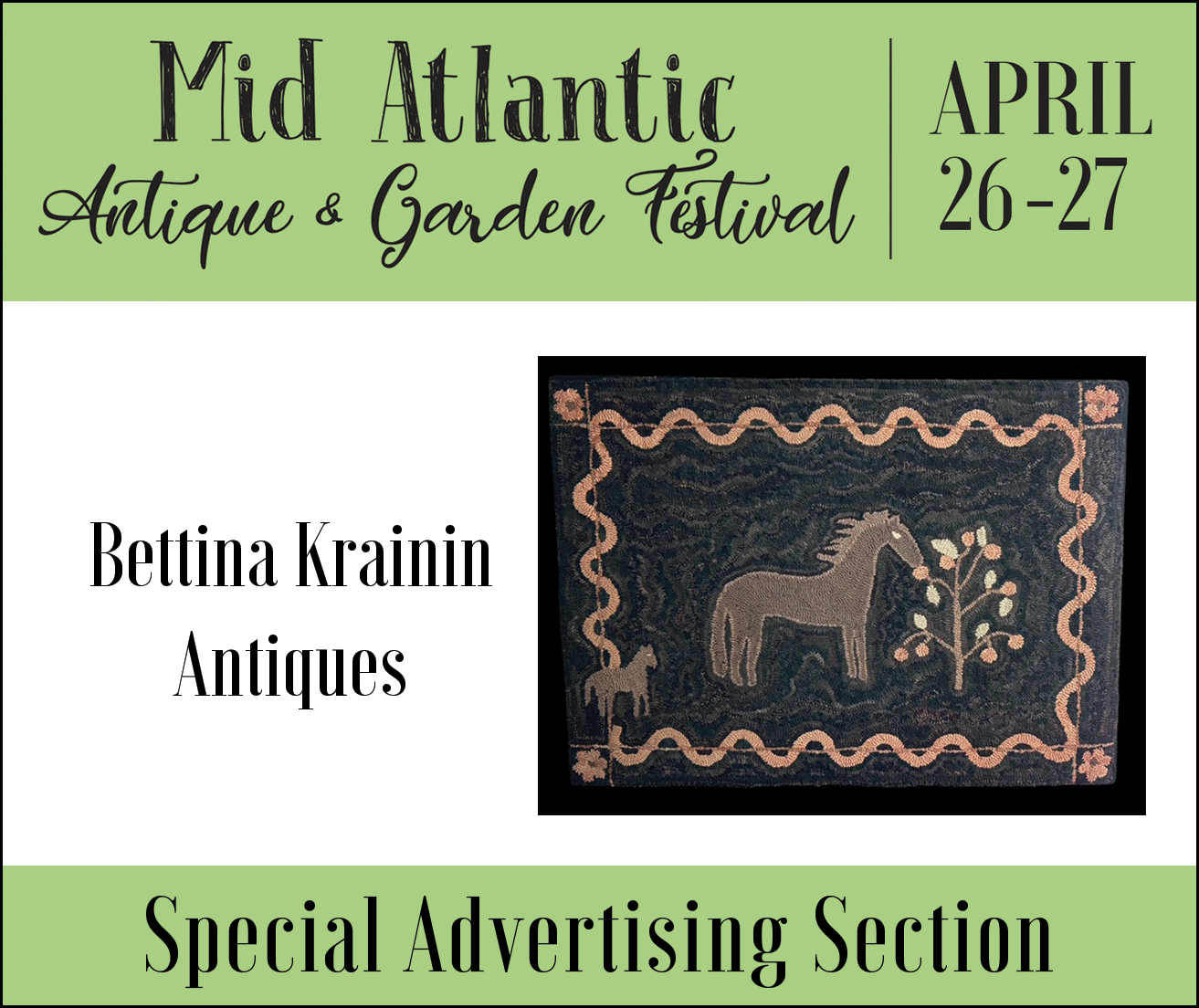Wootens Succeed at Debut Sale
March 16th, 2013
|
This circa 1830 15-gallon stoneware storage jar signed by Harvey Drake of the Edgefield District, South Carolina, was the top lot of the sale at $168,000. See story for details.
A circa 1830 hunt board from Forsyth County, North Carolina, 41 3/8" x 54¼" x 19½", was the top furniture lot at $10,200.
Bidding from the floor, Carol and Steve Huber bought this framed 16" x 12 3/16" watercolor family register from Massachusetts for $22,800. If my observation proved correct, the Hubers did not jump in until the register reached $7500 after an opening bid of $3000. Until they joined the fray, it was all phone bidders.
Face pitchers are not common, and this one from the Edgefield District of South Carolina, attributed to Mark Baynham, was just one of a handful known. The 7¼" x 5½" pitcher opened at $11,000 on a $12,000/18,000 estimate and closed one step higher at $14,400 to an absentee bidder.
Myrtle Bowen’s portrait measured 11½" x 9 5/8", and although at $1200 it was not the most expensive painting in the sale, her cute face was an audience favorite.
There was quite a battle for this June 11, 1863, letter describing a Civil War battle in Virginia. Estimated at $250/350, it opened at $600, and Internet bidders fought their own war over it. No one in the house jumped in. It sold for $4560. |
Wooten & Wooten, Camden, South Carolina
Photos courtesy Wooten & Wooten
In our attempts to attract young collectors, we may have put the cart before the horse. What if instead of lecturing the younger generation about quality, history, and value, we were to encourage people their own age to invite them to an auction or antiques show? The perfect hosts would be young art historians and young auctioneers. When these professionals put on an antiques auction, their friends and acquaintances might want to attend and buy.
That scenario was one element of the business plan devised by Jeremy and Rebecca Wooten. He is a 27-year-old auctioneer, late of Charlton Hall auction house in West Columbia, South Carolina. She is a 2007 graduate of Winterthur with a master’s degree in American material culture. Their big idea for a small business resulted in a splendid debut auction in historic Camden, South Carolina, on March 16.
Friends and family did their part working the phones, computers, photo gallery, and checkout. Others bid on and won many of the higher-priced lots in the 463-lot sale. The auction had total sales of $427,230 (with buyers’ premiums), so the plan seems to be working.
The Wootens combined most of the ingredients for success in just the right proportions. Consignment rates were simple and straightforward, with no photo fee. Color catalogs were complimentary for the first sale; $15 thereafter. The Web site is creative, colorful, and easy to navigate. LiveAuctioneers handled Internet bidding. A Thursday night preview attracted a wine and cheese crowd of 200, and at its height 100 potential bidders were in the auction gallery. The Wootens also had strong local support for a new auction house in antiques-friendly Camden.
The variety of merchandise ranged from a 17th- or 18th-century Colono-Indian ware bowl ($240) and a circa 1840 painted New England blanket box ($1200) to a Peter Max mixed media painting ($720) and a George Nakashima breakfast table ($5280). Three categories—southern pottery, paintings, and furniture—were remarkably deep. The sale included 58 pots, 51 furniture lots, and 99 paintings, engravings, and etchings. Each category had its star.
For southern pottery, the headliner was a one-of-a-kind 15-gallon Edgefield (South Carolina) stoneware storage jar signed by Harvey Drake, the first owner of Dave, the enslaved master potter. Harvey Drake taught Dave to read and write using the Bible, and Dave perfected his considerable pottery skills under Drake. The cursive signature was difficult to detect on the circa 1830 jar, a fact that might account for its selling at Metrolina, a popular Charlotte, North Carolina, show, for $4000 a couple of decades ago. Noted South Carolina pottery dealer Phil Wingard, who attended the Wooten sale, owned the jar for a time. He sold it through Billy Ray Hussey’s Southern Folk Pottery Collectors Society five years ago for $125,000. The consignor contacted Wingard and asked where he might sell the Drake jar. Wingard replied, “Let Jeremy sell it.”
The Drake jar opened at $120,000 from an absentee bidder, and Wooten advanced the bids in $5000 increments. Within moments, the jar was sold to a phone bidder for $168,000. After a round of applause, Jeremy remarked, “That’s the most expensive thing I’ve ever sold!”
Of the 41 lots that brought over $1000 at the hammer, 14, or 34%, were southern pottery. Familiar names that did well were Burlon Craig ($2280 for a small double face jug), Lanier Meaders ($1320 for a 10" tobacco spit-glaze face jug), and anything from the Edgefield District of South Carolina.
The top painting was a circa 1800 watercolor family register. It chronicled births and two deaths in the Loring family of Massachusetts. The names were written on a printed columned wall with hand-painted homes, trees, and a formally dressed family above and a nesting swan and cornucopia below. Five phones were active when the register opened at $3000. Among those competing on the phone was a Pennsylvania businessman bidding from Thailand. The winning bid at $22,800 came from the floor. Noted sampler and textile dealers Carol and Stephen Huber, who have a home on Hilton Head Island, South Carolina, bought the register for stock.
The painting that broke everyone’s heart was of a five-year-old girl from nearby Clinton, South Carolina. On the back of her portrait was this note: “Miss Myrtle Bowen died March 25, 1897 age 5 years, 3 months, painted by John [illegible] from photo 1898.” A young neurosurgeon from Columbia, South Carolina, Philip Toussaint, bought it for $1200. “We love nineteenth-century period antiques,” he said during the sale. Toussaint and his wife are friends of the Wootens.
The star furniture lot was supposed to be a circa 1835 rare Classical rosewood writing desk from Baltimore or Louisiana. Wooten’s policy was not to drop below one-half of the lower presale estimate, and no one bid the necessary $5000 for the desk. That cleared the way for a circa 1830 walnut hunt board from Forsyth County, North Carolina. A phone bidder claimed the hunt board for $10,200. George Pettit of Princeton, Kentucky, was an underbidder.
A few ingredients may need tweaking before the next quarterly sale. The sound system was adequate for half of the room and near silent for the other. The paperwork system Jeremy used to keep up with the sale went awry. He often tried to sell the upcoming lot rather than the current one. Bidding cards were too small for a large room.
The inaugural sale had 148 passed lots, a statistic that gave the sale a sell-through rate of 68%. In the Carolinas, where few lots are passed, that is quite low. By examining this and other statistics, Jeremy and Rebecca will determine what sells in their market and make adjustments. They are off to an impressive start. The applause that erupted at the end of the sale was not for a high-dollar sale but for them. Bravo!
For more information, contact Jeremy and Rebecca at (866) 570-0144 or visit their Web site (www.wootenandwooten.com).
|
The detail shows the corn shuck seat on one of the dining chairs by Richard Hunter of Camden, South Carolina. From after World War II to the early 1990’s, Hunter harvested the field corn shucks, selected only the inner shucks, soaked them, and twisted them into a tight cords for the seat. Pottery dealer Phil Wingard said that he had heard the seat referred to as a “100-year bottom.” Prunkl photo. |
|
|
|
|
Originally published in the June 2013 issue of Maine Antique Digest. © 2013 Maine Antique Digest

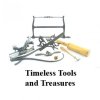

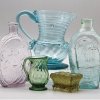
















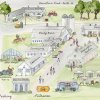




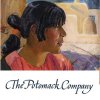




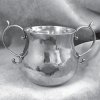

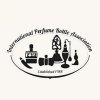






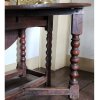
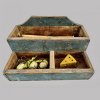



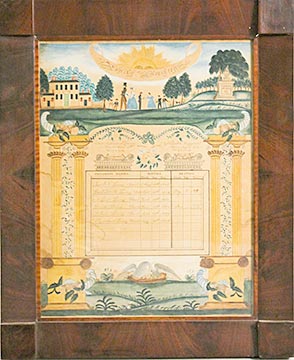
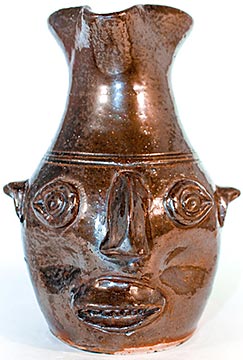
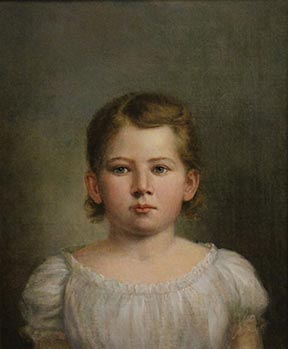
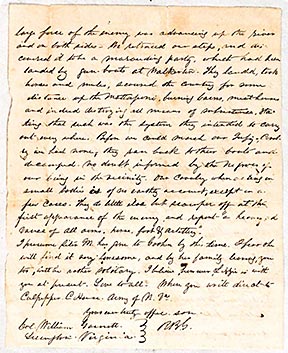
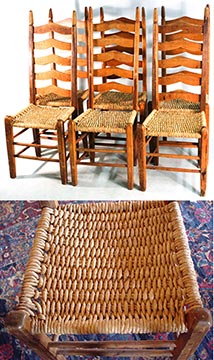 These six dining chairs (48½" x 17¼" x 15") are the work of Richard Hunter, an African-American furniture maker from Camden, South Carolina. Hunter sold his handmade creations in Camden shops after World War II. Newspapers reported that Hunter made four chairs every three weeks. The set sold in house for $1200. The winner also claimed a pair of Hunter-made child’s side chairs (not shown) for $210.
These six dining chairs (48½" x 17¼" x 15") are the work of Richard Hunter, an African-American furniture maker from Camden, South Carolina. Hunter sold his handmade creations in Camden shops after World War II. Newspapers reported that Hunter made four chairs every three weeks. The set sold in house for $1200. The winner also claimed a pair of Hunter-made child’s side chairs (not shown) for $210.  Dealer Mary Ellen Phillips of Lexington, South Carolina, won this signed circa 1965 Patek Philippe men’s Calatrava wristwatch for $4560 (est. $1000/1500). The case is 18k yellow gold; the band has been replaced.
Dealer Mary Ellen Phillips of Lexington, South Carolina, won this signed circa 1965 Patek Philippe men’s Calatrava wristwatch for $4560 (est. $1000/1500). The case is 18k yellow gold; the band has been replaced.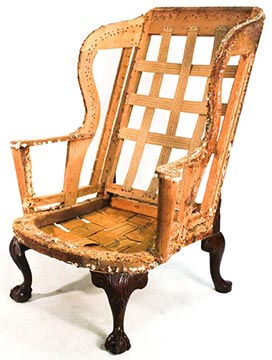 A phone bidder captured this George II carved mahogany wing chair with beech secondary for $3420. The Wootens dated the 43 7/8" x 30¼" x 37" chair to circa 1740.
A phone bidder captured this George II carved mahogany wing chair with beech secondary for $3420. The Wootens dated the 43 7/8" x 30¼" x 37" chair to circa 1740.

